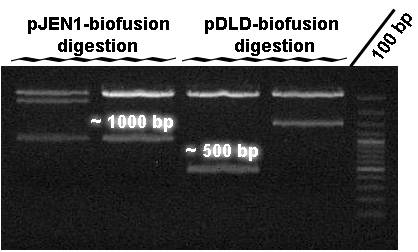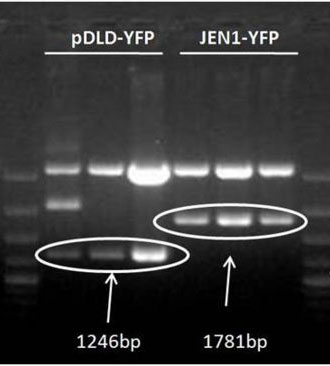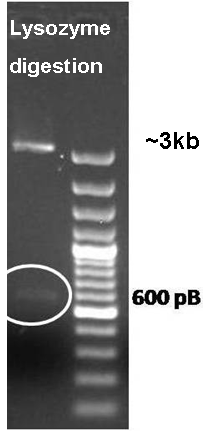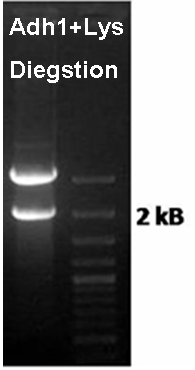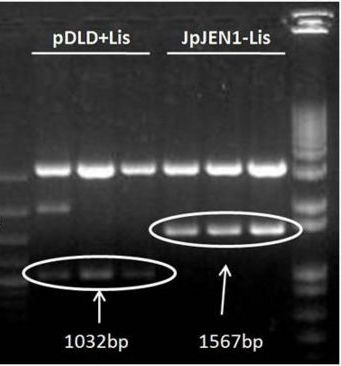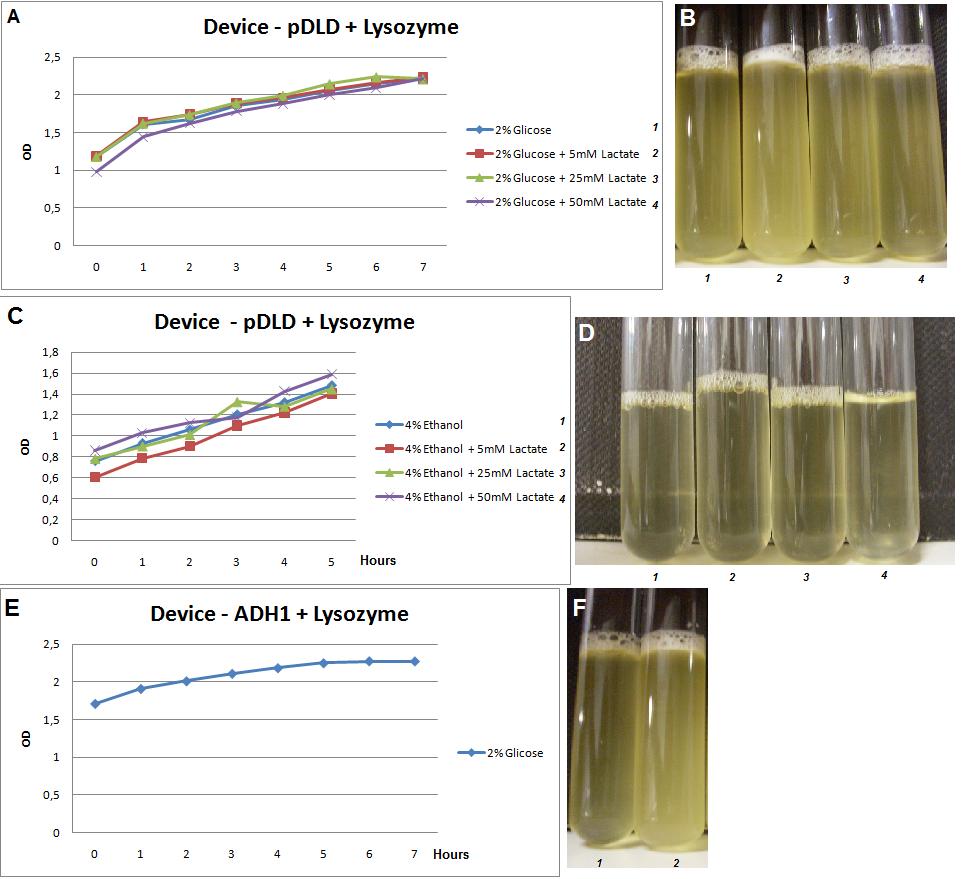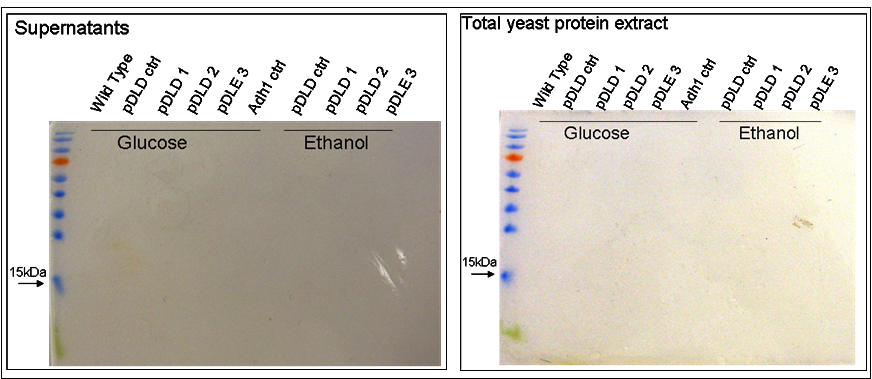Team:UNICAMP-Brazil/Yeastguard/Results
From 2009.igem.org
(→Yeast experiments: Lysozyme) |
|||
| (12 intermediate revisions not shown) | |||
| Line 1: | Line 1: | ||
{{:Team:UNICAMP-Brazil/inc_topo}} | {{:Team:UNICAMP-Brazil/inc_topo}} | ||
__NOTOC__ | __NOTOC__ | ||
| - | = | + | =The Yeastguard: Results= |
| - | === | + | ===Confirmed Biobricks=== |
| - | + | ---- | |
'''Mechanism of recognition''' | '''Mechanism of recognition''' | ||
| + | |||
''Parts:'' | ''Parts:'' | ||
| Line 26: | Line 27: | ||
'''Killing mechanism''' | '''Killing mechanism''' | ||
| + | |||
''Parts:'' | ''Parts:'' | ||
| Line 44: | Line 46: | ||
| + | ===Yeast experiments: Lysozyme=== | ||
| + | ---- | ||
| - | |||
| - | Lysozyme constitutive expression and Lysozyme expression in response to lactate (DLD promoter) devices were | + | Lysozyme constitutive expression and Lysozyme expression in response to lactate (DLD promoter) devices were cloned into a yeast expression vector (YEp358 ura+) and then they were transformed into the Saccharomyces cerevisiae FY23 ura- strain. After being plated in selective medium without uracil, the transformants were selected and transferred to liquid medium (also selective) containing glucose or ethanol as carbon source. |
| - | After being plated | + | |
| - | + | ||
| - | + | With these tests we expect to see if there is expression of lysozyme under control of the constitutive promoter(ADH1) and the lactate responsive (pDLD) promoters, the last one under lactate induction. The idea of using ethanol as carbon source is to see if there is catabolic repression of the pDLD promoter by glucose, it wouldn't work in glucose samples if this hypothesis were true. | |
| + | We inoculated the pre inocula in 50mL of each medium (YNB Ethanol Ura- and YNB Glucose Ura-). The wild type yeast is Ura- so we grew it on YNB Glucose Ura+. The inocula grew for 4 hours in 30ºC and 150rpm until the OD 1,0 before the induction with lactic acid. When the cultures reached the OD600 of 1.0, we started the lactate induction. | ||
| - | + | We performed the induction 5-7 hours long. We measured the OD every one hour to construct a growth curve (Figure 1 - a,c,e) . At the end of the 5-7 hours we pelleted the culture, collected the supernatant and freezed the pellet to analyze in SDS-PAGE and in ''Lactococcus lactis'' death experiment. | |
| - | |||
| + | [[Image:Graficos.jpg|630px|center]] | ||
| + | Figure 1: Yeast growth curves and the respectives ''Lactococcus lactis'' death experiment ''(1 - control: non-induced)''. | ||
| + | '''The samples were analyzed by:''' | ||
| - | + | I) Application of the yeasts culture supernatant in liquid cultures of ''Lactococcus lactis''(Figure 1 - b,d,f). | |
| + | II) SDS-PAGE of the supernatant and the total extract of the yeats cells (in case the protein has not been exported) to see if the protein was expressed (Figure below). | ||
| + | |||
| + | |||
| + | [[Image:geis sds page final result.png|400px|center]] | ||
| - | |||
| - | |||
We couldn't load the pellet ethanol samples maybe because of residual ethanol at the pellets; the alcohol hinder the entry of the sample in the well. | We couldn't load the pellet ethanol samples maybe because of residual ethanol at the pellets; the alcohol hinder the entry of the sample in the well. | ||
| - | + | ||
Unfortunately we couldn't see any protein band in the gel neither in the supernatant one nor in the total extract one. Maybe we loaded insufficient amounts of sample. | Unfortunately we couldn't see any protein band in the gel neither in the supernatant one nor in the total extract one. Maybe we loaded insufficient amounts of sample. | ||
| - | |||
{{:Team:UNICAMP-Brazil/inc_rodape}} | {{:Team:UNICAMP-Brazil/inc_rodape}} | ||
Latest revision as of 03:56, 22 October 2009
| ||||||||||||||||||||||||||||||||||
 "
"









